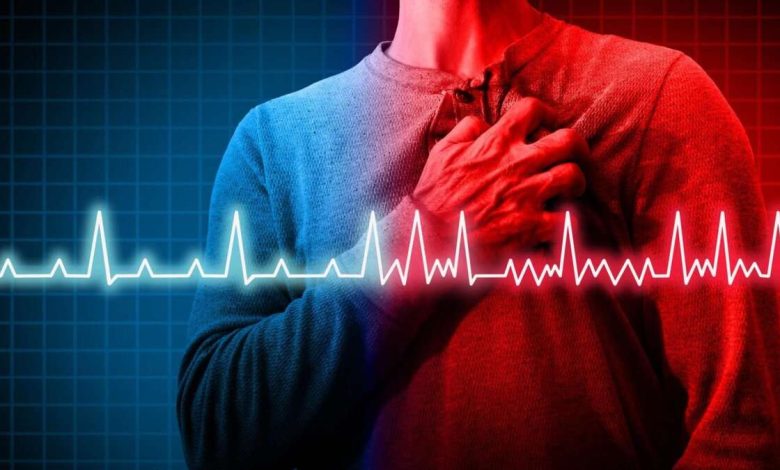Chest pain: what is this, causes, symptoms, diagnostics, treatment, prevention

Chest pain; Chest tightness; Chest pressure; Chest discomfort
Chest pain is a common complaint, which can be caused by various conditions. This is a critical symptom., which may indicate a serious health problem, and it can't be ignored.
What is chest pain?
Chest pain refers to discomfort, pressure or tightness in the chest, which can range from mild to severe. It can be sharp or blunt, constant or intermittent and may be accompanied by other symptoms, such as shortness of breath, nausea or sweating. Chest pain can also radiate to the arms, neck, jaw or back.
Causes of chest pain
Chest pain can have many causes, some of which are benign and self-healing, while others may be serious or life-threatening. Some of the most common causes of chest pain include:
- Cardiac: Chest pain, caused by heart problems, often described as a feeling of constriction, pressure or heaviness in the chest. This type of chest pain is often caused by a heart attack., angina pectoris or cardiac arrhythmia.
- Gastrointestinal tract: chest pain can also be caused by digestive problems, such as acid reflux, indigestion or gallstones. Pain may be felt in the chest and may radiate to the back, hands, neck or jaw.
- Respiratory system. Chest pain can also be caused by respiratory problems., such as pleurisy, pneumonia or bronchitis. Pain may be felt in the chest and may be accompanied by shortness of breath and cough.
- Locomotor apparatus: Chest pain can also be caused by musculoskeletal problems., such as muscle strain or rib injury. Pain may be felt in the chest and may be accompanied by stiffness or tenderness in the affected area.
- Psychological: chest pain can also be caused by psychological problems, such as anxiety or panic attacks. Pain may be felt in the chest and may be accompanied by other symptoms, such as sweating, palpitations and shortness of breath.
Symptoms of chest pain
Chest pain is the main symptom, but it may be accompanied by other symptoms, which vary depending on the underlying cause of the pain. Some of the most common symptoms include:
- Breathlessness
- Fast heartbeat
- Sweating
- Nausea
- Fatigue
- Dizziness
- Refine in Gruda
- Pain in the arm or jaw
- Cough
When to contact a healthcare professional
Chest pain can be a sign of a serious health problem, and you need to see a doctor immediately, if the pain is accompanied by any of the following symptoms:
- Chest pain, sudden and strong
- Chest pain, which radiates into the hands, neck, jaw or back
- Shortness of breath or wheezing
- Fast or irregular heartbeat
- Sweating or dizziness
- Nausea or vomiting
- Chest pain, which is accompanied by fainting or near fainting
Questions, that your doctor may ask
Your doctor will ask you some questions, to help diagnose the cause of chest pain. Some of the questions, which you can expect, include:
- When did chest pain appear??
- What is the nature of the pain (acute, stupid, pressing, etc.. d.)?
- How long does the pain last?
- Does the pain radiate to other parts of the body??
- Have you experienced any other symptoms?
- What increases or decreases pain?
- Have you been diagnosed with any diseases?
- What medications are you currently taking?
Diagnosis of chest pain
Diagnosis of the cause of chest pain requires a comprehensive assessment, which may include a physical examination, medical history and laboratory tests, such as blood tests, X-ray or electrocardiogram (ECG). In some cases, your doctor may also do additional tests., such as an echocardiogram, CT scan, MRI or coronary angiography, to help diagnose the cause of your chest pain.
Used sources and literature
Amsterdam, Wenger Nk, Toast RG, et al. 2014 AHA/ACC guideline for the management of patients with non-ST-elevation acute coronary syndromes: a report of the American College of Cardiology/American Heart Association Task Force on Practice Guidelines. J Am Coll Cardiol. 2014;64(24):e139-e228. PMID: 25260718 pubmed.ncbi.nlm.nih.gov/25260718/.
Bonaca MP, Sabatine MS. Approach to the patient with chest pain. In: Libby P, Bonow RO, Mann DL, Tomaselli GF, Bhatt DL, Solomon SD, eds. Braunwald’s Heart Disease: A Textbook of Cardiovascular Medicine. 12th ed. Philadelphia, PA: Elsevier; 2022:chap 35.
It's Brown. Chest pain. In: Walls RM, Hockberger RS, Gausche-Hill M, eds. Rosen’s Emergency Medicine: Concepts and Clinical Practice. 10th ed. Philadelphia, PA: Elsevier; 2023:chap 22.
Goldman L. Approach to the patient with possible cardiovascular disease. In: Goldman L, Schafer AI, eds. Goldman-Cecil Medicine. 26th ed. Philadelphia, PA: Elsevier; 2020:chap 45.
Gulati M, Levy PD, Mukherjee D, et al. 2021 AHA/ACC/ASE/CHEST/SAEM/SCCT/SCMR guideline for the evaluation and diagnosis of chest pain: a report of the American College of Cardiology/American Heart Association Joint Committee on Clinical Practice Guidelines. J Am Coll Cardiol. 2021;78(22):e187-e285. PMID: 34756653 pubmed.ncbi.nlm.nih.gov/34756653/.
O'Gara PT, Kushner FG, Ascheim DD, et al. 2013 ACCF/AHA guideline for the management of ST-elevation myocardial infarction: a report of the American College of Cardiology Foundation/American Heart Association Task Force on Practice Guidelines. J Am Coll Cardiol. 2013;61(4):E78-E140. PMID: 23256914 pubmed.ncbi.nlm.nih.gov/23256914/.
